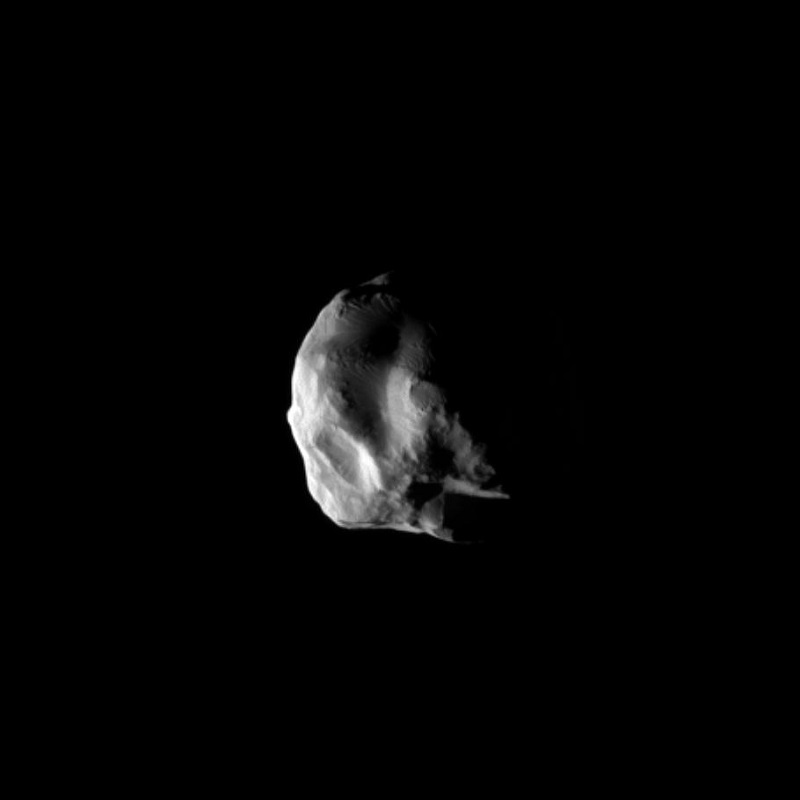NASA dixit:
“March 3, 2010. The Cassini spacecraft snapped this image during the spacecraft’s closest flyby of Saturn’s moon Helene (33 kilometers, or 21 miles across). The small moon leads the much larger Dione by 60 degrees in the moons’ shared orbit. Helene is a “Trojan” moon of Dione, named for the Trojan asteroids that orbit 60 degrees ahead of and behind Jupiter as the giant planet circles the Sun.
Lit terrain seen here is on the anti-Saturn side of Helene. The south pole of the moon is in the lower right of the image. The image was taken in visible light with the Cassini spacecraft wide-angle camera. The view was obtained at a distance of approximately 1,900 kilometers (1,200 miles) from Helene and at a Sun-Helene-spacecraft, or phase, angle of 90 degrees. Scale in the original image was 235 meters (771 feet) per pixel. The image has been magnified by a factor of two and contrast-enhanced to aid visibility.”
“After almost 20 years in space, NASA’s Cassini spacecraft begins the final chapter of its remarkable story of exploration: its Grand Finale. Between April and September 2017, Cassini will undertake a daring set of orbits that is, in many ways, like a whole new mission. Following a final close flyby of Saturn’s moon Titan, Cassini will leap over the planet’s icy rings and begin a series of 22 weekly dives between the planet and the rings.
No other mission has ever explored this unique region. What we learn from these final orbits will help to improve our understanding of how giant planets – and planetary systems everywhere – form and evolve.
On the final orbit, Cassini will plunge into Saturn’s atmosphere, sending back new and unique science to the very end. After losing contact with Earth, the spacecraft will burn up like a meteor, becoming part of the planet itself.
Cassini’s Grand Finale is about so much more than the spacecraft’s final dive into Saturn. That dramatic event is the capstone of six months of daring exploration and scientific discovery. And those six months are the thrilling final chapter in a historic 20-year journey.”
Image credit: NASA











 Subscribe to blog posts using RSS
Subscribe to blog posts using RSS










